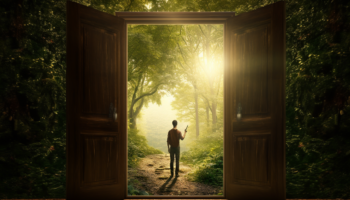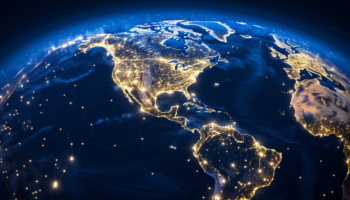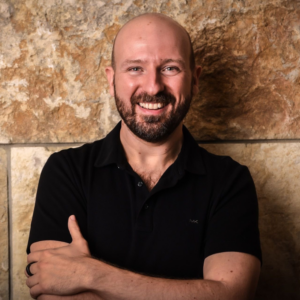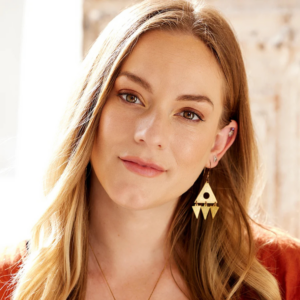Psychedelic, a compound of two Greek words that mean “mind-manifesting,” can safely refer to just about anything these days—from music to t-shirts to TV programming. Humphry Osmond is said to have invented the word in a letter to Aldous Huxley, famously writing, “To fathom hell or soar angelic, take a pinch of psychedelic.”
And thank God he did—the alternatives do us no favors in our movement to normalize mind-expanding compounds like LSD, psilocybin, MDMA, and DMT. For example, hallucinogenic suggests brightly-colored cartoon apparitions and other flimsy nothings. Psychotomimetic (i.e. psychosis-mimicking), now long discontinued, inspires even less confidence.
If you are curious about how MDMA is used to heal trauma, then listen to our interview with Dr. Ben Sessa who talks about Healing Trauma with MDMA, and the Future of Psychiatry or Click here to read the transcript
But it’s a laboratory term, clean and objective, that presents the biggest obstacle to the new psychedelic movement—the three letters, LSD. For a huge cohort of people alive in the 60s and 70s, LSD is shorthand for disintegration, psychosis, and cultural panic. And how can you blame them? Just listen to Ronald Reagan and Richard Nixon spell it out. With the federal government fully committed to intimidation and polite society fully onboard, this outsize fear of psychedelics has reverberated through the generations—stopping progress on psychedelic science dead in its tracks.
THIRD WAVE
That is, until now: in the last decade, dozens of psychedelic studies have been initiated with partners as unlikely as the Department of Defense; psychedelic culture is booming, and sympathetic scrutinies of psychedelic research are headlining The New Yorker and Rolling Stone.
In liberal circles, it really does seem that the terrifying old myths about LSD are finally being seen for what they are: hallucinations. But if our hope is to ring in a Third Wave of psychedelic culture for a wider audience, we have to confront our traumatic past head-on—that is, with both compassionate understanding and a critical eye for the historical facts.
THINGS WERE BETTER THEN…
LSD wasn’t always such a loaded initialism. When Swiss chemist Albert Hofmann first synthesized LSD (lysergic acid diethylamide) in 1938, he was looking for a drug to help stimulate uterine contractions—and thought nothing else of it until his first ingestion of the colorless, odorless compound on April 19th, 1943 (history’s first LSD trip). And far from prompting his banishment or a canton-wide crackdown, LSD’s discovery only raised Hofmann’s profile at Sandoz—which arranged to have free doses shipped around the world for use in psychotherapy and clinical research.
Even in the conservative consensus years of the 1950s and early 1960s, LSD was treated in generally positive—and at worst, clinically neutral—terms. This was largely due to a bevy of studies which variously claimed that psychedelics were effective in treating alcoholism, autism, depression, and criminal tendencies—the ultimate Tomorrowland elixir in a culture obsessed with better living through chemistry.
Take the 1954 Time Magazine medicine column, “Dream Stuff,” which introduces mescaline as a “psychiatrist’s tool” and opens with a sympathetic quote from The Doors of Perception: “I [was] in a world where everything shone with the Inner Light”. Or the 1957 Life Magazine essay, “Seeking the Magic Mushroom,” in which Gordon Wasson lushly describes his first encounter with the psilocybin mushroom rituals of southern Mexico. A cheerful photo inset carries the title, “Rare vision-giving fungi shown for first time.”
Or the 1960 Time column, “The Psyche in 3-D,” which fawningly uncovers the quiet network of LSD psychiatrists treating Hollywood, powering burned-out old stars like Cary Grant through midlife awakenings on the therapy couch. To say nothing of “The Chemical Mind-Changers,” a 10-page Life feature about the new science of applied neurochemistry, which spends a bit of time on Skinner’s behaviorism and prescription tranquilizers, but is most interested in assessing LSD’s potential as a “mind-changer.” Drawing on 5,000 research cases, the author deems psychedelics “safe when given to a healthy selected group,” and writes, “for ‘normal’ people, the hallucinogens can give a rewarding esthetic, philosophical, or religious experience—such as a sudden sense of comprehension of the nature of God.”
From these surprising black-and-white features, clinically skeptical but free of trauma and moral panic, we can trace a direct line to contemporary coverage by mainstream figures like Michael Pollan, Ayelet Waldman, and Sanjay Gupta. And the fact that a fear-free, evidence-based approach to psychedelics was once possible during the days of Ward Cleaver and Ed Sullivan should leave us optimistic about our prospects of getting psychedelics right in the techno-libertine ‘teens of the new millennium.
So why the 50-year wait? In other words, what went wrong in the first place?







excellent research and very educational